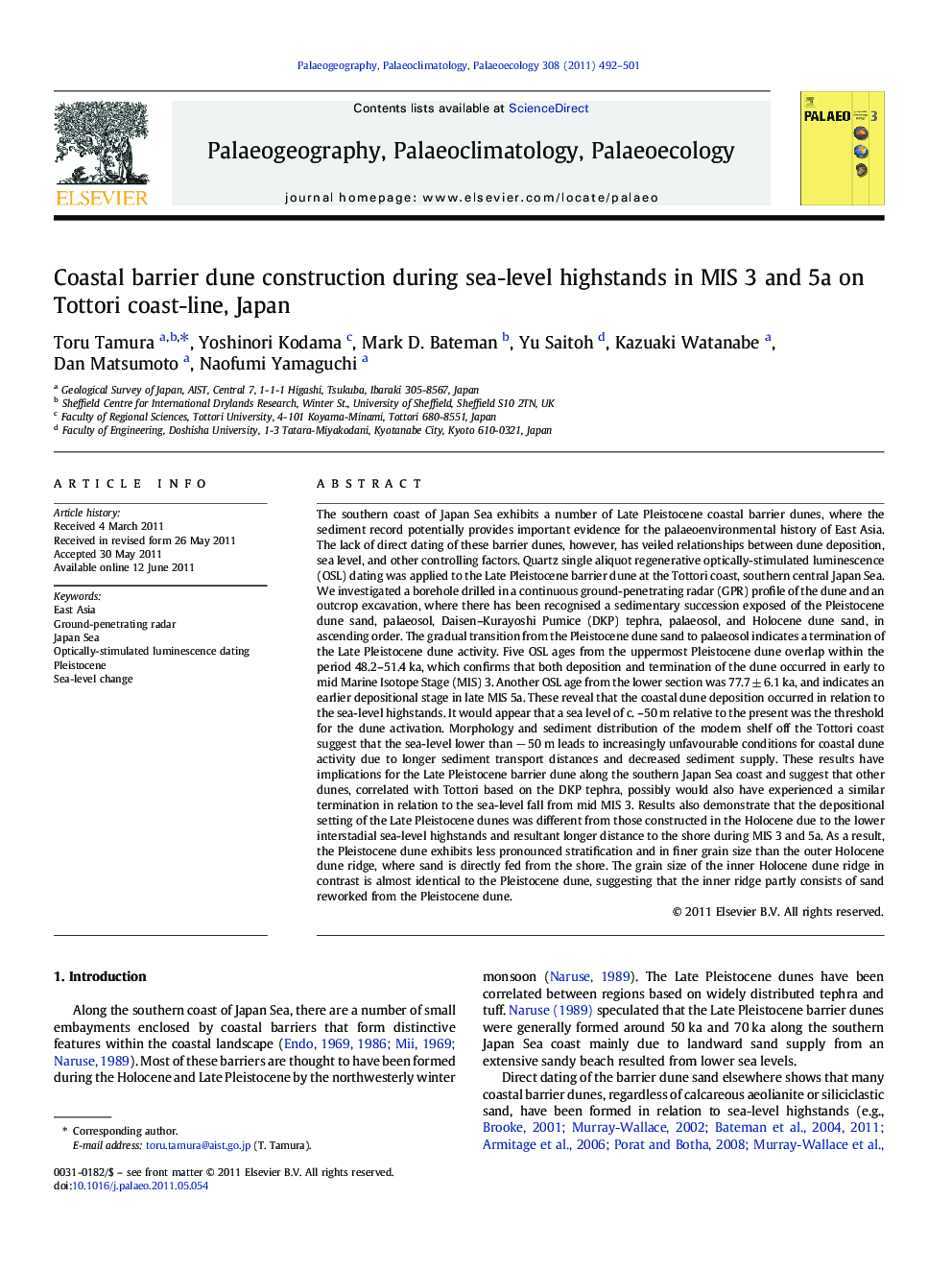| Article ID | Journal | Published Year | Pages | File Type |
|---|---|---|---|---|
| 4467140 | Palaeogeography, Palaeoclimatology, Palaeoecology | 2011 | 10 Pages |
The southern coast of Japan Sea exhibits a number of Late Pleistocene coastal barrier dunes, where the sediment record potentially provides important evidence for the palaeoenvironmental history of East Asia. The lack of direct dating of these barrier dunes, however, has veiled relationships between dune deposition, sea level, and other controlling factors. Quartz single aliquot regenerative optically-stimulated luminescence (OSL) dating was applied to the Late Pleistocene barrier dune at the Tottori coast, southern central Japan Sea. We investigated a borehole drilled in a continuous ground-penetrating radar (GPR) profile of the dune and an outcrop excavation, where there has been recognised a sedimentary succession exposed of the Pleistocene dune sand, palaeosol, Daisen–Kurayoshi Pumice (DKP) tephra, palaeosol, and Holocene dune sand, in ascending order. The gradual transition from the Pleistocene dune sand to palaeosol indicates a termination of the Late Pleistocene dune activity. Five OSL ages from the uppermost Pleistocene dune overlap within the period 48.2–51.4 ka, which confirms that both deposition and termination of the dune occurred in early to mid Marine Isotope Stage (MIS) 3. Another OSL age from the lower section was 77.7 ± 6.1 ka, and indicates an earlier depositional stage in late MIS 5a. These reveal that the coastal dune deposition occurred in relation to the sea-level highstands. It would appear that a sea level of c. –50 m relative to the present was the threshold for the dune activation. Morphology and sediment distribution of the modern shelf off the Tottori coast suggest that the sea-level lower than − 50 m leads to increasingly unfavourable conditions for coastal dune activity due to longer sediment transport distances and decreased sediment supply. These results have implications for the Late Pleistocene barrier dune along the southern Japan Sea coast and suggest that other dunes, correlated with Tottori based on the DKP tephra, possibly would also have experienced a similar termination in relation to the sea-level fall from mid MIS 3. Results also demonstrate that the depositional setting of the Late Pleistocene dunes was different from those constructed in the Holocene due to the lower interstadial sea-level highstands and resultant longer distance to the shore during MIS 3 and 5a. As a result, the Pleistocene dune exhibits less pronounced stratification and in finer grain size than the outer Holocene dune ridge, where sand is directly fed from the shore. The grain size of the inner Holocene dune ridge in contrast is almost identical to the Pleistocene dune, suggesting that the inner ridge partly consists of sand reworked from the Pleistocene dune.
Research highlights► We characterised the evolution of Pleistocene coastal barrier dunes on Japan Sea. ► The Pleistocene dunes formed in relation to sea-level highstands in MIS 3 and 5a. ► The sea level of c. –50 m appears to be a threshold for the dune activation. ► The distance to the shore and sediment supply primarily controlled the dune activity.
